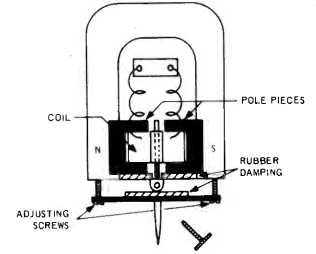MUCH OF THIS ISSUE is devoted to phono cartridges and usually we would include a comprehensive Directory and Listing of Specifications. However, as our next issue is our Annual Directory number, listing all hi-fi products, we decided to omit a separate phono listing now. Phono cartridges are like loudspeakers in one respect--it is impossible to say that one particular model is superior to anything else.

Some people like the bright, slightly clinical sound of Brand X, others prefer the soft, smoother sound of Brand Y. One thing is certain: There are now half-a-dozen top quality cartridges with almost state-of-the-art performance not thought possible in the early days of stereo just a few years ago.
Tracking pressures have nearly reached the theoretical optimum of half a gram or so, which reminds me... . Many years ago, I designed a pick-up of which I was quite proud. It had a weight of four ounces and this fearsome beast could be attached to a phonograph soundbox arm by means of an adapter. Yes, it was a long time ago, but this was in England where people were (and are) a little conservative about new ideas! And, to be honest, radio sets of those days, with their crude loudspeakers, were not that much better than some acoustic phonographs anyway. The basic arrangement of the GWT cartridge is shown in the drawing. The two screws at the bottom are for centering the armature so that it was more or less in the middle of the pole pieces. If it was too near one side, it could suddenly fall over in a fit of perversity and stick to the pole piece-but a turn of a screw and it would clear itself, with a "thunk" from the protesting loudspeaker! This kind of balanced armature design was self-equalizing as low frequencies with their large excursions brought the armature nearer the pole pieces and so gave a higher output-really a kind of amplitude distortion! Output was high-around 250 millivolts--necessary for the radio receivers of the day. The stylus, held in by a set-screw, was made of steel, although some purists preferred to use needles made of fiber--which could be re-sharpened on a piece of sandpaper until there was nothing left but the point! Anyway, this particular cartridge was quite popular but it was eventually super ceded by a needle-armature type. This form of construction dispensed with the chunk of iron and set-screw and just used the needle as the armature, thus reducing the moving mass. Needle-armature pick-ups would not perform with fiber needles--a fact which perplexed a few users, including, I remember well, the operator of a PA system at a football match where there was no half-time music because the whole amplifier was disemboweled after the stylus was changed!
The Earplay Project
Earplay is a project jointly sponsored by the Univ. of Wisconsin and the Corporation for Public Broadcasting to produce drama for distribution to some 500 broadcasting stations. The director is Karl Schmidt who says, "There is no present market for drama in this country. Further, it is fair to say that there never was a consistent market for plays of literary quality. It is our attempt through the Earplay Project to create such a market.... Though we are attempting to reach a significant audience, we are aware of the need for a place for playwrights to try new ideas and new techniques." I have always wondered why this country lags behind most European countries in this field. Some of the best drama on TV comes from Britain's BBC but it has confounded the critics by being extremely popular here too! What Earplay is doing is to purchase 20 short-play scripts a year with awards up to $1000 each. The second year competition opens September 1, and further instructions can be obtained from Karl Schmidt, Earplay, WHA Radio, Madison, Wisc. 53706. I have often said that quadraphonics is an ideal medium for drama-perhaps Earplay can look for new ideas and techniques in this format.
CBS + E-V + ?
CBS and Electro-Voice have announced that they now have reached an agreement in principle for a non-exclusive exchange of patent rights and technology relating to their respective quadraphonic systems. Included in this exchange are the patent rights recently granted to Peter Scheiber.
Adolph Wolf, President of Electro-Voice, said, "This is a major step in achieving industry compatibility." So, now it's up to Sansui....
G.W.T.
= = = =
(Source: Audio magazine.)
Also see: